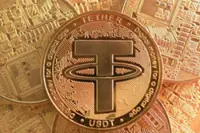Wright says he used the pseudonym 'Satoshi Nakamoto' to protect his privacy not to remain anonymous. — AP
LONDON: One of the enduring mysteries of the cryptocurrency industry took center stage on Feb 6 in a London court where a trial could finally settle the debate over the identity of bitcoin's founder.
Australian computer scientist Craig Wright entered the witness box at the High Court and testified he was the man behind "Satoshi Nakamoto,” the pseudonym that has masked the identity of the creator of bitcoin.
Wright has long asserted that he is Nakamoto. A nonprofit group of technology and crypto companies is trying to prove he’s not. The trial started on Feb 5 and is expected to last a month, before a judge rules at a later date.
"Wright’s claim to be Satoshi is a lie, founded on an elaborate false narrative backed by forgery of documents on an industrial scale,” attorney Jonathan Hough said on behalf of the Crypto Open Patent Alliance (COPA) at the outset of trial. "As his false documents and inconsistencies have been exposed, he has resorted to further forgery and ever more implausible excuses.”
At stake is not just bragging rights to the creation, but control of the intellectual property rights.
Wright has used his claim as bitcoin's inventor to file litigation to drive developers away from further developing the open-source technology, the alliance claims in their lawsuit. The ruling will affect three pending lawsuits that Wright has filed based on his claim to having the intellectual property rights to bitcoin.
"Wright has threatened to bankrupt developers, sent notices of his intent to sue, and has, in fact, engaged in scorched earth litigation against these volunteers, all premised on the baseless assertion that he is the founder of bitcoin,” the alliance said Monday in a statement.
The murky origins of bitcoin date to the height of the financial crisis in 2008. A paper authored by a person or group using the Nakamoto pen name explained how digital currency could be sent around the world anonymously, without banks or national currencies. Nakamoto seemed to vanish three years later.
Speculation on the true identity swirled for years and the names of several candidates had emerged when Wright first surfaced to claim the identity in 2016 only to quickly return to the shadows, saying he didn't "have the courage” to provide more proof.
Wright asserted in court Tuesday that he created the technology and the cryptic identity behind it, which he said was based on his admiration for Japanese culture. He said the name was a combination of the surname of philosopher Tominaga Nakamoto and Satoshi David, a figure in a book about American tycoon J.P. Morgan, and a Pokemon character.
He said he didn't want the creator to be anonymous, so he used an alias to protect his privacy.
"This allowed me to focus on my work and ensured that the spotlight remained on the innovation and potential of bitcoin rather than the individual behind it," he said.
Defence lawyer Anthony Grabiner said the alliance hadn't produced positive evidence that Wright wasn't Satoshi, and only sought to undermine the authenticity of documents that he has relied on to prove that he's the creator.
"It is striking that no one else has credibly claimed the mantle of Satoshi, despite the high-profile nature of Dr Wright’s claim to be Satoshi,” Grabiner said. "If Dr Wright were not Satoshi, the real Satoshi would have been expected to come forward to counter the claim.”
While Wright managed to convince several influential bitcoin enthusiasts that he was the real deal by demonstrating the use of Nakamoto’s secret bitcoin keys, other crypto experts said that they debunked his claims. Despite widespread scepticism in the cryptocurrency community, he has prevailed in court cases.
In 2021, he won a civil case in Florida against the family of a deceased business partner that claimed it was owed half the 1.1 million bitcoin, worth approximately £37.7bil (RM226.68bil) today, that could only be owned by a person or entity involved with the digital currency from its beginning - such as the creator.
Wright and other cryptocurrency experts testified at trial that he owned the bitcoin in question. His lawyers claimed that while he had collaborated with his deceased friend, David Kleiman, their partnership had nothing to do with bitcoin’s creation or early operation.
Because all bitcoin transactions are public, members of the bitcoin community have regularly called for Wright to move just a fraction of the coins to prove ownership. Wright appears to have never done so, despite vowing to prove that he's the owner of the fortune.
In the London trial, Hough repeatedly sparred with Wright over the authenticity of documents that he said support his claims.
Hough said that the original white paper on the creation of bitcoin was written on OpenOffice software and that experts on both sides agreed that Wright submitted a version created on software called LaTeX, which didn't exist when the paper was written.
Hough suggested that numbers misaligned on the document behind the "origin myth” were signs it had been forged.
"If I forged that document, it would be perfect," said Wright, who is due to testify for another five days. – AP





